Lottery incentives have short-term impact on ART initiation among men: results from a randomized pilot study
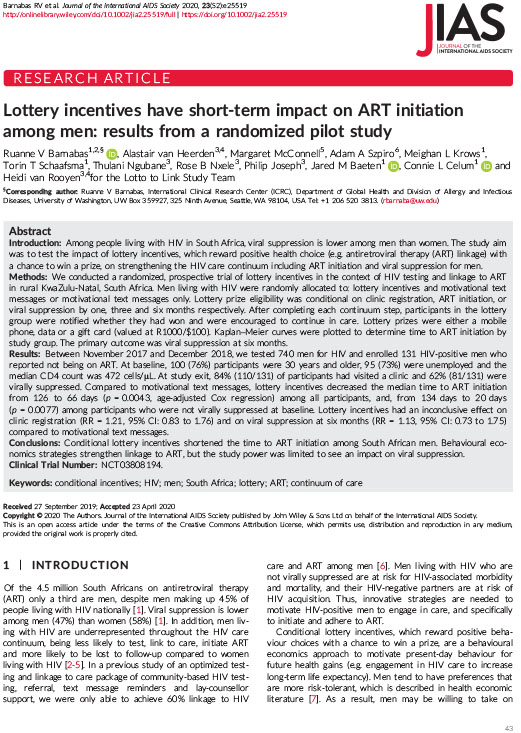
Introduction Among people living with HIV in South Africa, viral suppression is lower among men than women. The study aim was to test the impact of lottery incentives, which reward positive health choice (e.g. antiretroviral therapy (ART) linkage) with a chance to win a prize, on strengthening the HIV care continuum including ART initiation and […]
Briefing on men’s health for WHO gender, equity and human rights unit
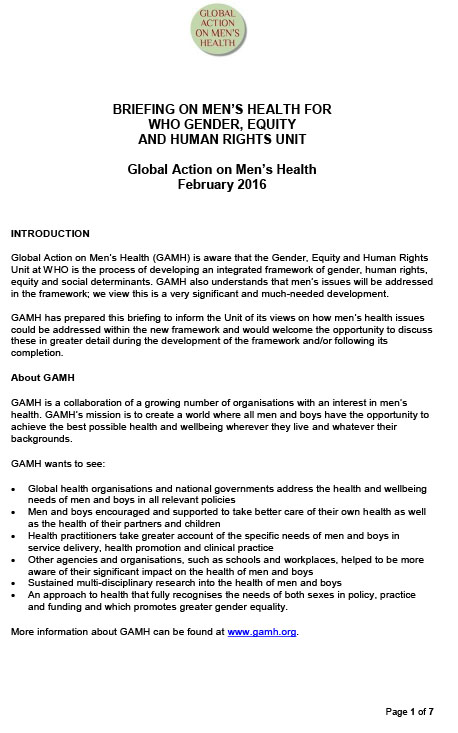
Global Action on Men’s Health (GAMH) is aware that the Gender, Equity and Human Rights Unit at WHO is the process of developing an integrated framework of gender, human rights, equity and social determinants. GAMH also understands that men’s issues will be addressed in the framework; we view this is a very significant and much-needed […]
Trends in ART Initiation among Men and Non-Pregnant/Non-Breastfeeding Women before and after Option B+ in Southern Malawi

Background Option B+ is promoted as a key component to eliminating vertical transmission of HIV; however, little is known about the policy’s impact on non-targeted populations, such as men and non-pregnant/non-breastfeeding women. We compare ART uptake among non-targeted populations during pre/post Option B+ periods in Zomba District, Malawi. Methods Individual-level ART registry data from 27 […]
Predictors of loss to follow-up among patients on ART at a rural hospital in KwaZulu-Natal, South Africa
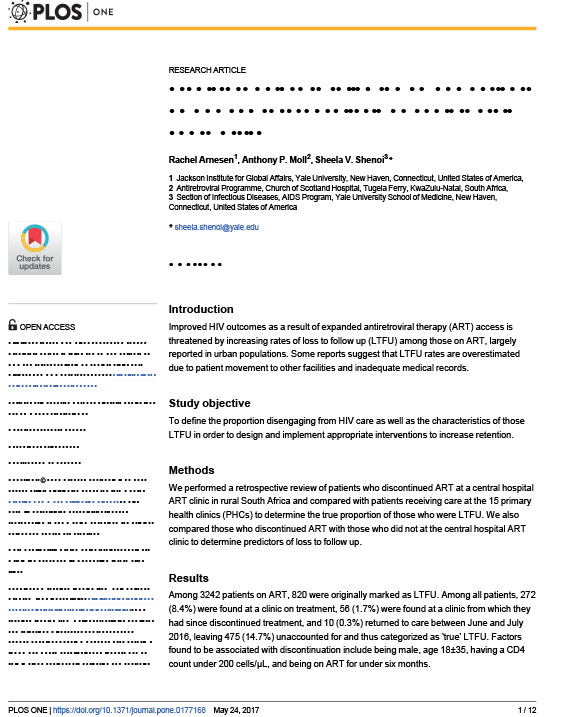
Introduction Improved HIV outcomes as a result of expanded antiretroviral therapy (ART) access is threatened by increasing rates of loss to follow up (LTFU) among those on ART, largely reported in urban populations. Some reports suggest that LTFU rates are overestimated due to patient movement to other facilities and inadequate medical records. Study objective To […]
Men’s heightened risk of AIDS-related death: the legacy of gendered HIV testing and treatment strategies

Women are frequently depicted as the face of AIDS in sub-Saharan Africa (SAA) where they comprise nearly 58% of all reported HIV infections. Donor dollars, policies, and HIV programs have followed suit, resulting in a near-exclusive focus on women. Although African women are represented as particularly vulnerable to HIV infection, it is men, not women, […]
The men’s health gap: men must be included in the global health equity agenda
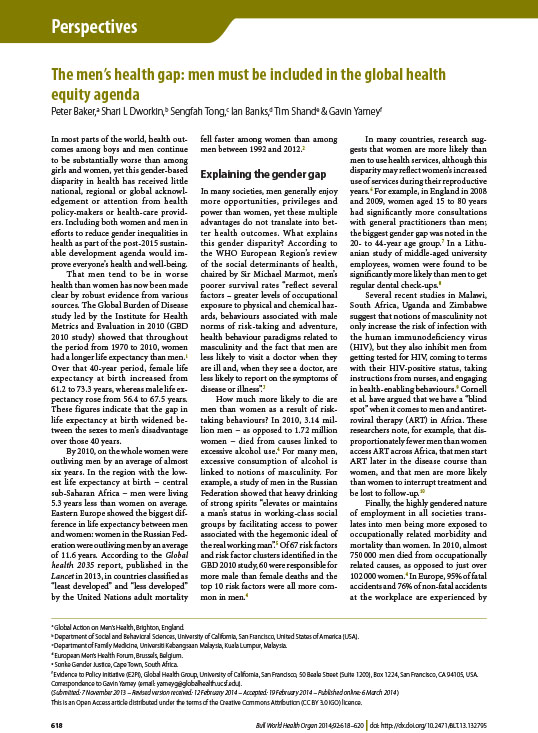
In most parts of the world, health outcomes among boys and men continue to be substantially worse than among girls and women, yet this gender-based disparity in health has received little national, regional or global acknowledgement or attention from health policy-makers or health-care providers. Including both women and men in efforts to reduce gender inequalities […]
Men and antiretroviral therapy in Africa: our blindspot
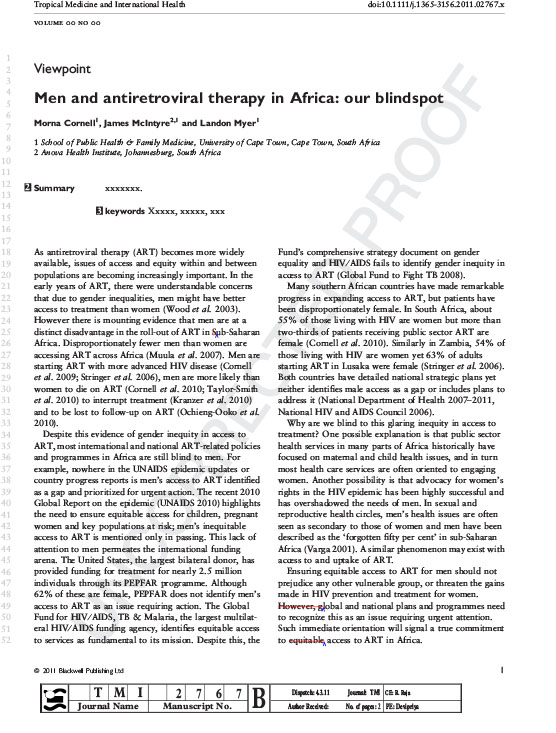
Most antiretroviral therapy (ART)-related policies remain blind to men’s treatment needs. Global and national programmes need to address this blindness urgently, to ensure equitable access to ART in Africa.
Male sex and the risk of mortality among individuals enrolled in antiretroviral therapy programs in Africa: a systematic review and meta-analysis
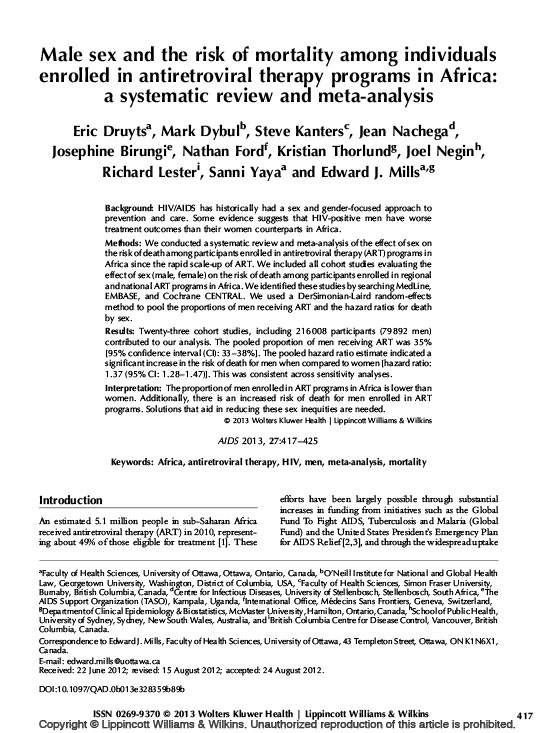
Background: HIV/AIDS has historically had a sex and gender-focused approach to prevention and care. Some evidence suggests that HIV-positive men have worse treatment outcomes than their women counterparts in Africa. Methods: We conducted a systematic review and meta-analysis of the effect of sex on the risk of death among participants enrolled in antiretroviral therapy (ART) […]
Expanding HIV care in Africa: making men matter in Johannesburg
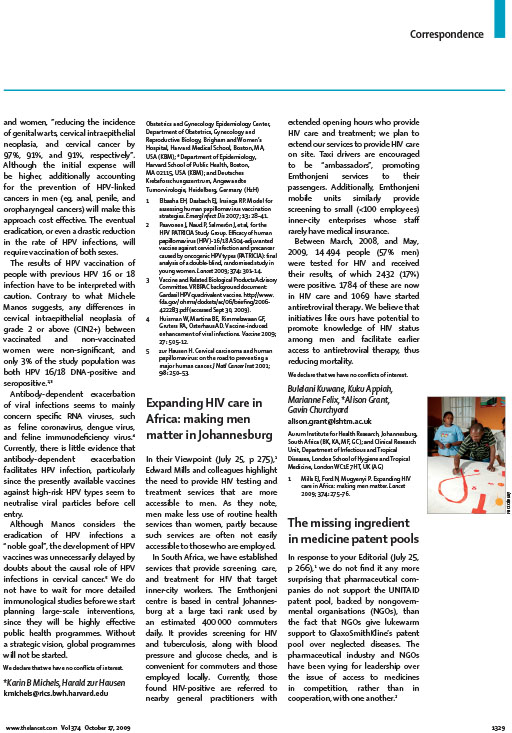
In their Viewpoint (July 25, p 275), Edward Mills and colleagues highlight the need to provide HIV testing and treatment services that are more accessible to men. As they note, men make less use of routine health services than women, partly because such services are often not easily accessible to those who are employed. In […]
Lower Levels of Antiretroviral Therapy Enrollment Among Men with HIV Compared with Women — 12 Countries, 2002–2013

World AIDS Day, observed on December 1, draws attention to the current status of the human immunodeficiency virus/acquired immunodeficiency syndrome (HIV/AIDS) epidemic worldwide. This year’s theme is World AIDS 2015: The Time to Act is Now. The first cases of AIDS were reported more than 30 years ago, in the June 5, 1981 issue of […]


